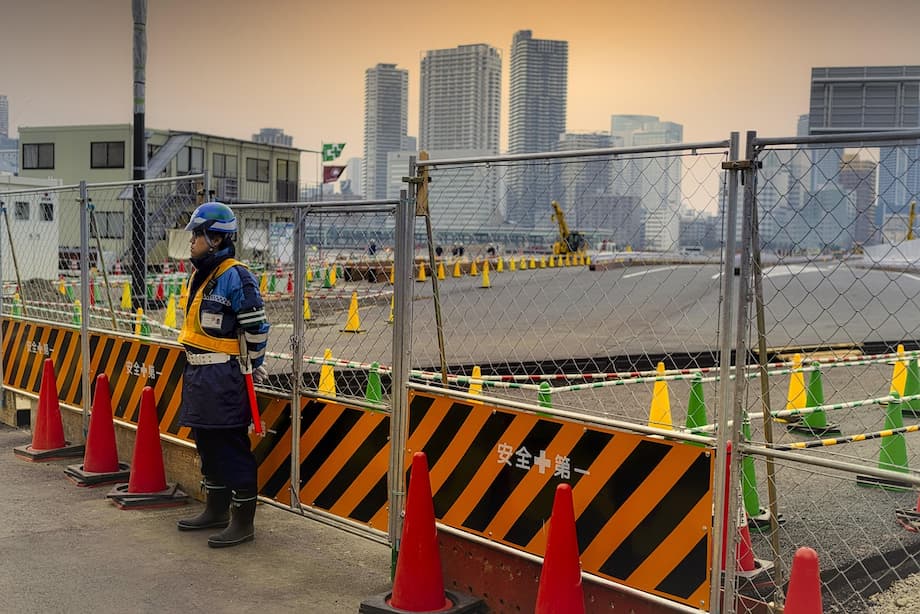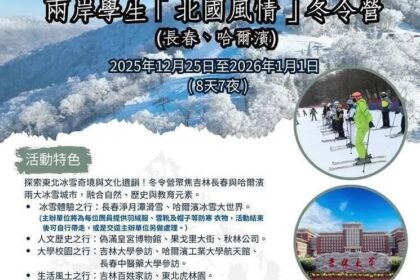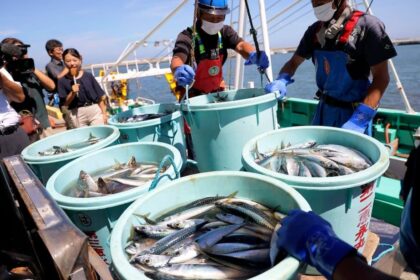A major reset for a critical workforce pipeline
Japan will dismantle its three decade old technical intern trainee program in 2027 and replace it with a new Employment for Skill Development system that gives foreign workers greater freedom to change jobs within their industry, stronger rights protections, and a clearer path into longer stays. The change answers growing pressure to fix labor abuses reported under the old scheme and to secure workers for sectors struggling to hire. Related laws are scheduled to take effect on April 1, 2027, when the new framework begins accepting trainees in 17 designated industries such as construction, agriculture, and nursing care.
- A major reset for a critical workforce pipeline
- What changes for workers
- From trainees to specified skilled workers
- Sectors under pressure and where the jobs are
- Guardrails to prevent a rush to big cities
- Why the old trainee program is being scrapped
- Timeline, compliance, and what employers must prepare
- Voices from government
- What to Know
Under the current program, trainees were, in principle, locked into their first employer and often their first dormitory, even when problems arose. A rule that blocked job moves for years created power imbalances and fuelled cases of unpaid wages, harassment, and disappearances. The new system opens a route to change workplaces inside the same industry after a period of on the job learning and assessment. The exact waiting time depends on the field. Most industries will allow a move after one year at the first company. Seven higher skill fields will require two years before a move, on the assumption that a longer period is necessary to reach baseline proficiency.
The government wants the training phase to be a stepping stone, not a cul de sac. After around three years, the aim is for many trainees to qualify for the Specified Skilled Worker visa, a residence status created to channel workers into long term roles. The entry level SSW category allows up to five years of stay in covered sectors once tests are passed. The advanced category allows renewals without a fixed limit and family reunification, and can lead to permanent residency. Policymakers say these reforms are meant to make Japan a place people choose to work as the population ages and labor shortages deepen.
What changes for workers
The new system rewrites rules that had discouraged reporting of bad conditions. It recognizes that career growth and mobility are part of worker protection. Within the same industry, trainees will be able to transfer to another employer once they have put in the required time and met set language and skill standards. Authorities will also tighten oversight of supervisors and recruiters, require language education, and standardize support for daily life so that newcomers are not isolated.
Job changes within the same industry
Two waiting periods will apply. In ten of the program’s 17 industries, a worker can change employers after at least one year at the original company if benchmarks are met. The other seven industries will require at least two years at the first workplace because of the depth of skills involved. The two year group covers food services, construction, nursing care, shipbuilding and ship machinery, automobile repair and maintenance, food and beverage manufacturing, and waste disposal. Transfers must stay within the worker’s industry, but they will allow a fresh start with a new employer.
Language and skill checks will sit at the center of the transfer rule. Workers will need basic proficiency in Japanese, often measured at JLPT N4 or an equivalent test, and proof of core technical abilities. To curb aggressive poaching and to recognize the cost of training, regulators plan to ask receiving companies to reimburse a portion of initial expenses to the first employer when they hire a transfer. A separate cap will limit how many transfer hires one firm can take under the training scheme to less than one third of its trainee headcount.
Officials also want to avoid a drain from rural regions to the biggest cities. Businesses in the eight most populous prefectures, including Tokyo, Kanagawa, Chiba, Saitama, Aichi, Osaka, Kyoto, and Hyogo, will generally be asked to keep transferees to no more than one sixth of their foreign workforce under the new program, unless their worksites are in depopulated communities. Employers elsewhere will be allowed a higher intake if they demonstrate strong worker support and language education, with the top tier permitted to hire up to three times the standard number of foreign workers.
The policy package folds in other protections. Both workers and employers will be responsible for taxes and social insurance from the outset. Time away from work because of pregnancy or childbirth can be excluded from time based residency calculations, which helps prevent career penalties for those who take maternity or parental leave. Authorities have also moved ahead with interim steps that make it easier for interns to transfer out of abusive workplaces under revised guidelines, and allow temporary part time work above 28 hours per week during a transfer period so that people can cover living costs. A special bridge to the SSW program will permit those who leave a trainee post to keep working under a designated activities status while they prepare for the SSW exam.
Language training and daily support
Employers will be required to provide structured language instruction and life support. Plans include at least 100 hours of Japanese language education during initial training, mandatory financial support for that training, and regular check ins by supervisors who can assist with housing, banking, and health care. The aim is to reduce isolation and prevent misunderstandings on the job, two common precursors to conflict.
Oversight will extend outside Japan as well. Under the old system, many trainees arrived already in debt because of large recruitment and brokerage fees paid in their home countries. Regulators are discussing a firm ceiling on those introduction costs at the equivalent of two months of the worker’s expected salary in Japan. Tighter control of recruiting agents and closer cooperation with sending governments are meant to reduce debt burdens that have pushed migrants into unsafe situations. Supervising organizations in Japan will face stricter audits, and poor performance could lead to suspension from the program.
From trainees to specified skilled workers
The new training track is designed as a ramp into the Specified Skilled Worker system. The entry level SSW category, known as No. 1, allows a stay of up to five years in sectors with chronic shortages once a language test and an occupation specific skills exam are passed. The higher SSW No. 2 status is reserved for advanced roles. It permits renewals without a fixed limit, family accompaniment, and a pathway to permanent residency. Workers who can already pass the required exams may apply directly for SSW without first entering the new training program, although that route requires stronger skills and language from day one.
Japan is making greater use of this channel. The number of people on SSW status reached a record high of more than 330,000 as of the end of June, with food and beverage manufacturing employing the largest share. The pool of SSW No. 2 workers, a marker of higher skill roles, has grown several times over in the last year. Foreign workers in Japan across all statuses number around 2.3 million, and Vietnamese workers make up the single largest group in the SSW category, followed by Indonesians and people from Myanmar. Roughly half of SSW No. 1 holders have transferred from the trainee program without needing to take a new exam, a sign that on the job training can translate into recognized skills.
Officials also want better alignment between the training program and the SSW sectors. The new training scheme will cover 17 fields that largely mirror the SSW No. 1 list, with driving and aviation excluded to keep transitions straightforward. Policymakers are considering an expansion of SSW coverage to include logistics warehouse management, waste disposal, and linen supply services. If adopted, those changes would take effect as early as 2027 and would expand the skills based visa to 19 industries in total. The combined approach is intended to channel people from entry roles into positions with deeper experience where longer stays make sense for both workers and employers.
Sectors under pressure and where the jobs are
The program targets the parts of the economy that have struggled the most to hire. Construction companies face a wave of retirements, a heavy pipeline of public works, and frequent rebuilds after earthquakes and typhoons. Farmers need help with planting, harvesting, and greenhouse operations as rural communities shrink. Nursing care facilities need more staff to support a rapidly aging population both in homes and in institutional settings.
Demand is also strong in food services and food manufacturing, where shift work and tight margins have made retention hard. Shipbuilding and ship machinery maintenance require precise skills and safety habits that take time to develop. Automobile repair and maintenance is adapting to new vehicle technologies. Waste disposal and resource recovery is expanding as cities upgrade recycling and environmental standards. Warehouse operations and linen supply services are part of a logistics network that has been running at full stretch to meet e commerce and health care needs. The new training rules, and the sector specific timelines for job changes, reflect the different learning curves across these fields.
Guardrails to prevent a rush to big cities
Higher wages and denser networks of compatriots naturally pull migrants to major urban areas. Policymakers worry that unrestrained transfers would leave rural regions without needed staff. The regulations will set a ceiling in eight populous prefectures so that job changers do not exceed around one sixth of the foreign workforce at a given business under the training program. Worksites in depopulated communities are expected to be exempt so that rural areas remain attractive destinations for both first jobs and transfers.
Outside those metropolitan areas, employers that demonstrate strong supervision and robust language support will be allowed a larger intake of workers, up to three times the standard allocation. The message is clear. Companies that invest in training and daily life support can hire more trainees and can receive more transfers. Regions that offer housing and integration support can retain workers who might otherwise leave.
Worker advocates welcome mobility but caution that caps should not trap people in poor conditions. Effective oversight, fast complaint handling, and the right to switch after the first year in most sectors are supposed to give workers an exit when needed. The reimbursement rule for training costs must be carefully implemented so it does not become a barrier to changing jobs.
Why the old trainee program is being scrapped
Created in 1993 to transfer skills to developing economies, the technical intern training program developed deep structural flaws. Bans on job changes made it hard to escape abusive supervisors. Weak oversight of recruiting agents in sending countries left many workers with large debts before they even boarded a plane. Reports documented unpaid wages, excessive overtime, and intimidation. The number of interns quitting without notice reached a record high last year, with thousands walking away from worksites. Construction accounted for about half of those cases, a sign of acute pressure on that sector.
Authorities have started to fix urgent problems even before the 2027 shift. Revised guidelines let interns transfer more easily when there are violations of law, harassment, or exploitation. People in transition can work part time above the typical 28 hour limit so they can pay rent and food while switching employers. A temporary status allows a move from a trainee post to the SSW track while a worker prepares for the skills exam. The new system aims to replace stopgap measures with a coherent framework that combines training, mobility, and career progression.
Timeline, compliance, and what employers must prepare
New laws that authorize the program are slated to take effect on April 1, 2027. An expert panel has been working on sector specific rules and supervisory standards, with a goal of publishing detailed guidelines and a ministerial ordinance ahead of the launch. Authorities have signaled that the full shift to the new system will take place by the middle of 2027, with operational manuals finalized beforehand so companies can prepare.
Employers should plan now for compliance. That means budgeting for language instruction of at least 100 hours, setting up mentorship and daily life support, and keeping transparent records of wages, overtime, taxes, and social insurance contributions. Firms must observe rules on transfer intake caps and be ready to reimburse a portion of initial onboarding costs when they accept a worker who transfers in. Recruiters and sending organizations should audit fee structures so that no one starts work in Japan under an unpayable debt.
Government agencies will expand audits and on site inspections, strengthen penalties for violations, and maintain hotlines where workers can seek help. Companies and supervising organizations with a strong track record will receive more flexibility, including higher intake quotas outside the large metropolitan prefectures. Those with poor records will face sanctions or removal from the program.
Voices from government
Senior officials frame the reform as essential to securing talent while fixing a system that invited abuse. Chief Cabinet Secretary Yoshimasa Hayashi captured that dual aim during the cabinet’s approval of the policy.
Hayashi said Japan must become a country that people choose as an attractive place to work amid the global competition to secure human resources.
The message is directed at both potential recruits and at employers. Pay, safety, and fair treatment matter as much as visa categories. The durability of the reform will hinge on how consistently those standards are enforced and how well companies and local governments support people outside the factory floor or worksite.
What to Know
- New Employment for Skill Development program starts in April 2027 and replaces the technical intern trainee scheme.
- Workers will be able to change employers within the same industry after one year in most fields and after two years in seven fields with longer learning curves.
- Seven sectors with a two year wait are food services, construction, nursing care, shipbuilding and ship machinery, automobile repair and maintenance, food and beverage manufacturing, and waste disposal.
- Language and skill benchmarks will govern transfers. Basic Japanese proficiency such as JLPT N4 and occupation specific skills are required.
- Employers must provide at least 100 hours of Japanese language education and standardized daily life support.
- Recruitment fees in sending countries are set to be capped at the equivalent of two months of expected salary to cut worker debt.
- Urban balance rules limit transferees to about one sixth of a company’s foreign workforce in eight major prefectures, with exceptions in depopulated areas.
- The program targets 17 industries and encourages trainees to move into the Specified Skilled Worker visa after around three years.
- SSW No. 1 allows up to five years of stay, while SSW No. 2 permits renewals without a fixed limit, family accompaniment, and a path to permanent residency.
- Foreign workers on SSW status have reached record numbers, and the government is considering expanding coverage to logistics warehouse management, waste disposal, and linen supply.












